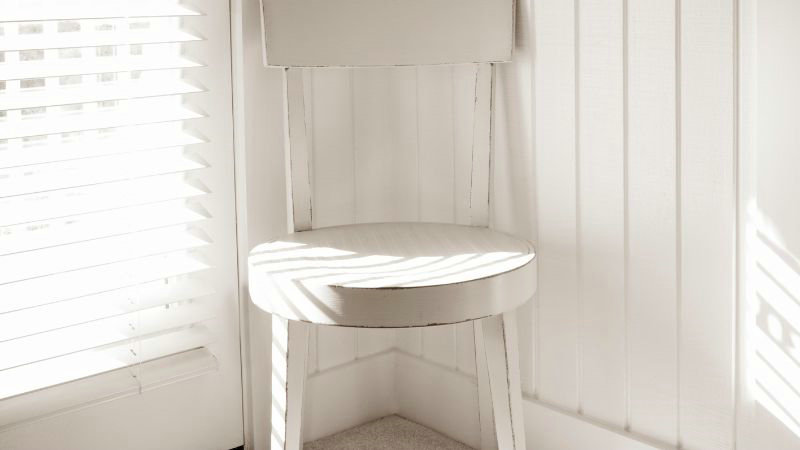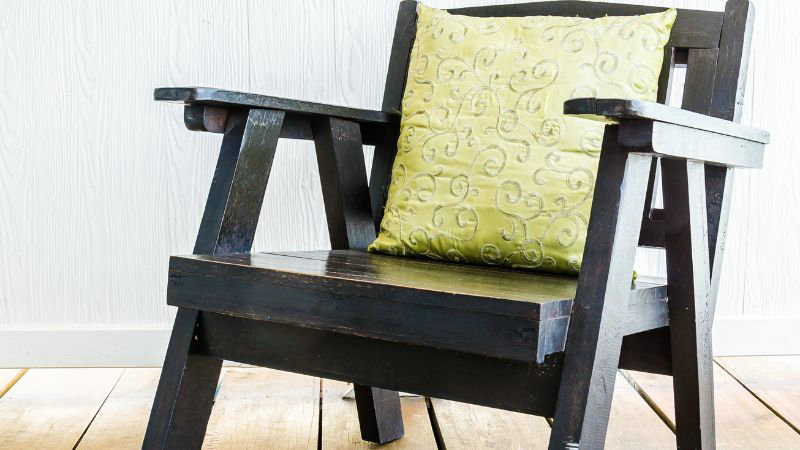
In today’s world, many of us spend long hours sitting at desks, whether at work or at home. With the rise of remote work and increased screen time, the importance of having a comfortable and supportive chair has never been greater. Poor seating can lead to a host of health issues, including back pain, neck strain, and poor posture.
One type of seating that has been used for centuries is the wooden chair. Known for their durability, versatility, and classic aesthetic, wooden chairs are a staple in many homes and offices. But the question remains: are wooden chairs actually good for back comfort and support?
In this article, we will explore the benefits of using wooden chairs, specifically focusing on their impact on back health. We’ll examine the ergonomic features to look for, the role of proper posture, and how to choose a wooden chair that promotes a healthy spine. Whether you’re already a fan of wooden seating or considering making the switch, read on to learn how this timeless furniture piece can affect your back comfort.
Why Wooden Chairs are Good for Back Comfort?
Some of the customers may think that the wooden chairs are too hard, which will definitely cause back injuries or discomfort. However, when wooden chairs incorporate ergonomic principles, they can promote good posture and provide excellent back support. Features like a curved backrest that follows the natural shape of the spine, wide seat, lumbar support, and armrests make wooden chairs comfortable for extended sitting.
Wooden chairs are sturdy and supportive. The solid structure and strength of hardwood chairs provide stability and help maintain proper spinal alignment when sitting. This firm support is important for reducing back strain and pain. A firm, supportive structure of a wooden chair encourages more frequent position changes and stretching compared to a very soft, sinking seat. This movement is beneficial for spine health and preventing stiffness.
Since wooden chairs are made from natural materials they may have physiological and psychological benefits, promoting relaxation and reducing stress compared to artificial materials, which could help with back tension.
What are the Benefits of a Wooden Chair?

Wooden chairs, especially those made from hardwoods like oak, ash, and maple, are extremely durable and can last for generations with proper care. They can withstand heavy use and wear without damage.
Wooden chairs come in a huge variety of styles, from traditional to modern, and can complement any interior design aesthetic. The natural beauty and warmth of wood grain make wooden chairs appealing in any setting.
Wooden chairs are simple to clean and easy to maintain. Regular dusting and occasional polishing can keep them looking great for years. Even if the finish becomes worn, wooden chairs can be refinished.
When harvested responsibly, wood is an eco-friendly and renewable material for furniture. Wooden chairs have a lower environmental impact than those made from plastics or metals.
What are the Different Types of Wooden Chairs?
There are many different types and styles of wooden chairs. Here are some of the main categories and examples:
- Chair back styles
- Bow back chairs – feature a curved, steam-bent back, often with spindles
- Windsor chairs – have a curved back with spindles and splayed legs
- Ladderback chairs – have horizontal slats across the back, resembling a ladder
- Slat back chairs – feature vertical slats along the back
- Press back chairs – have an image pressed into the top rail of the back
- Wingback chairs – have “wings” on the sides of a high back
2. Base/leg styles
- 4-legged chairs – traditional style
- Pedestal base – single central support
- Spindle legs – turned legs common on Windsor chairs
How to Choose a Wooden Chair Good for Back Comfort

When considering a wooden chair for your back, the design features can significantly affect your comfort levels. Well-crafted wood chairs are ergonomics and can help you maintain good posture, which is essential for back health and maximum comfort.
Seat Cushioning: A cushioned seat or upholster is vital for adding comfort, especially if you’ll be sitting for periods of time. Look for chairs with ample, durable seat cushions that provide both softness and support. Ergonomic chairs often feature memory foam or high-density foam that adapts to the shape of your body, which makes it easier to find the perfect sitting position.
Backrests: The design of the backrest contributes to spinal support. Ergonomic wooden chairs should have a curved backrest that mimics the natural curve of your spine. Additionally, some chairs come with a lower back pillow to enhance lumbar support.
Armrests: Armrests can reduce tension in your shoulders and neck. They should be sturdy and ideally, have padding for extra comfort. Adjustable armrests allow you to customize their height to align with your natural arm position.
Breathability: Consider slat-backed chairs for better air circulation, which can be more comfortable during prolonged sitting. If your chair comes with these features, they should support your head and feet comfortably without straining any part of your body.
Frequently Asked Questions
Does the design of the chair affect sitting posture?
Regular office chairs often lack adequate support and adjustability, which can lead to slouching, hunching, and other bad postures that strain the back and neck muscles. In contrast, proper sitting can lead to comfort.
What is the effect of prolonged sitting on blood circulation?
Sitting for long periods reduces blood flow to the legs and decreases shear stress (the tangential force of blood circulation on blood vessel walls). This can impair vascular function and contribute to cardiovascular disease risk.
How does sitting on a hard chair affect back health?
Sitting on a hard surface for extended periods can lead to increased pressure on your sit bones, which can cause discomfort and misalign your spine, leading to potential back issues.
Can the material of a chair cause back pain?
Yes, materials that lack flexibility or proper support may contribute to back pain. Wooden chairs, though sturdy, can be inflexible and may not accommodate the natural curves of your spine like padded chairs do.
What are the pros and cons of wooden chairs for back support compared to office chairs?
Wooden chairs often promote a more upright posture and may offer good spinal support if designed ergonomically. However, they lack the cushioning and adjustability that many office chairs provide, which could result in discomfort after prolonged periods of sitting.
Could prolonged sitting on a wooden chair aggravate hemorrhoids or leg pain?
If a wooden chair has a hard surface and lacks proper ergonomic features, sitting for long periods can lead to increased pressure on the lower body, potentially aggravating conditions like hemorrhoids or causing leg pain.
Why might someone experience back pain after sitting on a wooden chair?
Back pain after sitting on a wooden chair could be due to the chair’s lack of support for the spine’s natural curve, causing you to maintain a static, uncomfortable posture, which may strain your muscles and ligaments.
How to care for a wooden chair?
Properly caring for a wooden chair involves regular cleaning, protecting it from damage, and maintaining the finish. Dust the chair frequently with a soft cloth and clean occasionally with mild soap and water, drying immediately. Protect the chair from moisture, heat, and sunlight using coasters, placemats, and covers. Avoid harsh cleaning products that can damage the finish.






